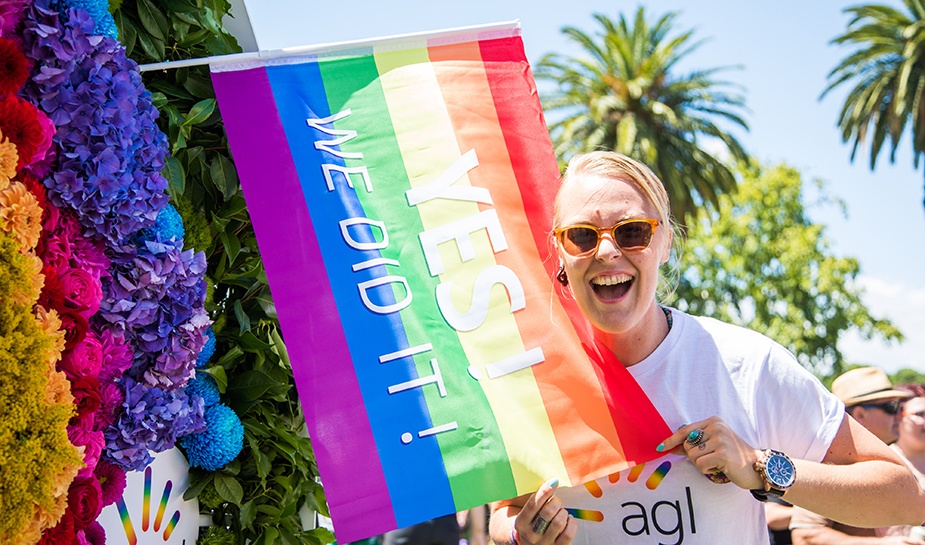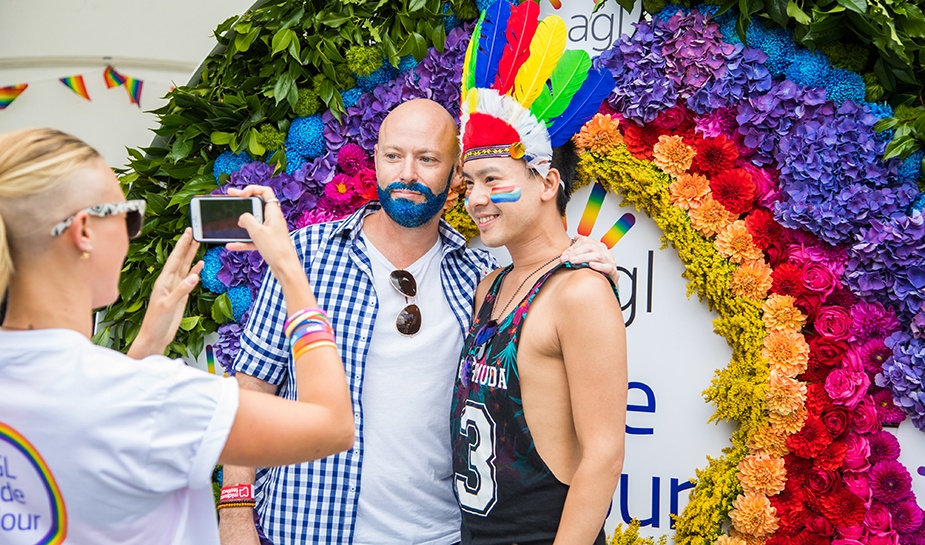Diversity. It’s a word that’s on many businesses’ lips and minds across the board, and its no wonder as it absolutely makes sense for companies to reflect the communities they serve. Smart companies know that diverse teams improve the product, they increase innovation and this leads to better results.
We’re seeing many of our clients adopt and implement diversity strategies into their businesses to attract new talent, support customers and overall be seen to be doing the right thing.
As part of this strategy, our clients are looking to experiential and events to publicise their commitment to diversity and get the conversation going in the real world within different communities.
Diversity refers to a range of different things including race, colour, gender, religion, age, and sexual orientation with the later getting increasing focus due to the recent ‘yes’ vote in Australia.

Many of our clients have had long term LGBTQI programs in place for a few years – so how do they start talking about this publically without looking like they are just jumping on the bandwagon? And how do they ensure it is the right approach for them?
For companies looking to further their diversity efforts in the LGBTIQ space from an experiential perspective here are some tips you may find useful.
1. Involve stakeholders from all levels of the business
Diversity is more than a set of HR policies it is all about the culture of an organisation. We’ve seen clients hire diversity officers whose role is to manage the strategy and involve all stakeholders. It’s important to include employees and get senior management buy-in and ensure they’re brought along the process and the initiative is appreciated as an asset not feared as a divisive issue.
2. Add value to the experience
When attending events have fun and don’t be too corporate. This is all about simply showing you support the community without forcing an agenda. This doesn’t mean don’t have some branded messages to provide context of why you are there. Simply being there shows you’re supportive so use you this as an opportunity to promote the programs you have in place and tell people the history of them.
3. Get the tone and language right
I’ve seen time and time again creatives come up with amazing ideas but the tone, language or words used would not be received well from people in the LGBTQI community. It’s therefore important to have a steering committee that can pick up any nuances and provide genuine feedback to avoid any situations where people may be offended. Let’s face it if you were talking to an Asian audience you’d seek advice from translators or community groups to ensure you adhered to any cultural differences, so the same principles apply.

4. Use people from your organisation at the live experience
To bring some credibility consider having some of your employees that identify as LGBTQI but also consider those that are supporters as well. Putting your people front and centre will ensure there is ownership and they can be proud to be part of the initiative. This can be supplemented with hired brand ambassadors who are used at live events to strike up conversations with the public and help the event run smoothly.
5. Have a long term vision and be committed
GAYTM’S didn’t appear overnight but were part of a long term strategy for ANZ who are seen as one of the leaders in the space. Supporting the LGBTQI community should not be seen as a tactical initiative, people see through that so make sure you have a 3-5 year plan in place. Having a clear vision that’s managed and nurtured will also minimise any confusion on where the business stands on such issues.
6. Be proud and promote your involvement
Many of your employees or customers may not see you at the live event so ensure you capture the content via a show reel or photos that can be seeded across your internal and social networks as way to amplify the campaign and provide greater reach.
 At Because, we’ve worked on a variety of LGBTQI events including Fair Day, Mid Summa and Queer Screens Mardi Gras Film Festival for clients like Woolworths and AGL so if you’re considering an experiential strategy to promote your diversity and inclusion initiatives please get in touch.
At Because, we’ve worked on a variety of LGBTQI events including Fair Day, Mid Summa and Queer Screens Mardi Gras Film Festival for clients like Woolworths and AGL so if you’re considering an experiential strategy to promote your diversity and inclusion initiatives please get in touch.